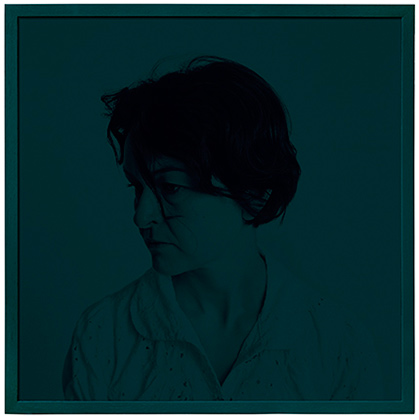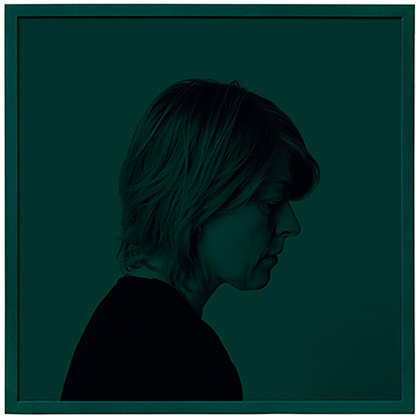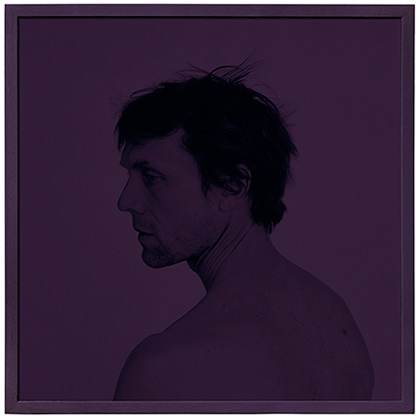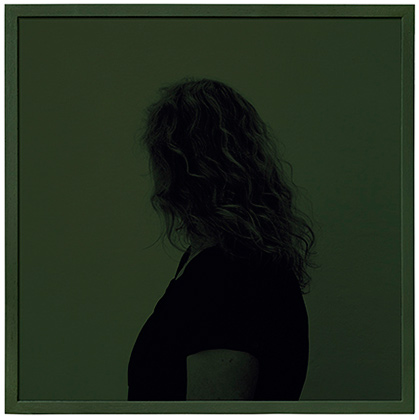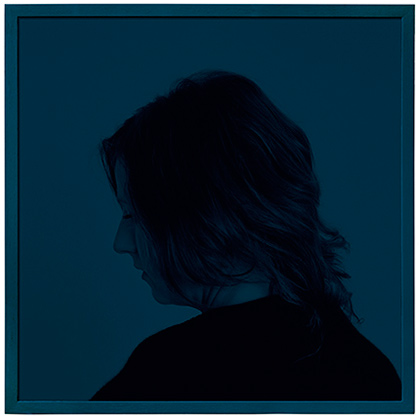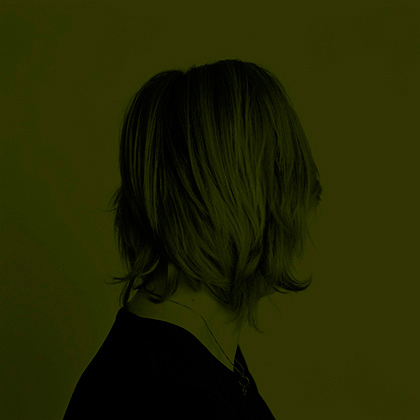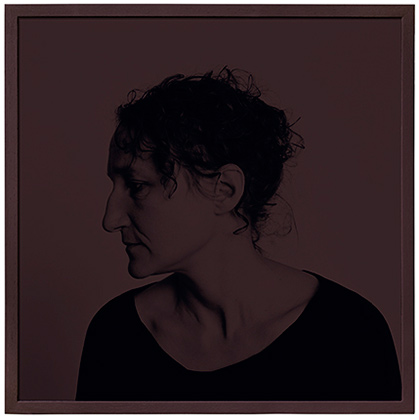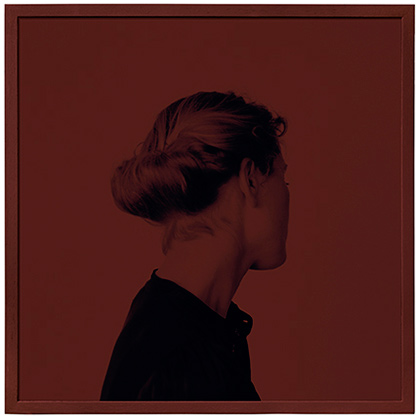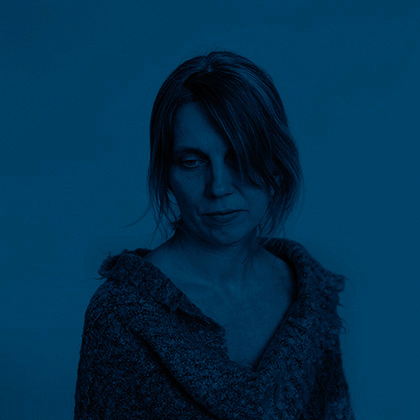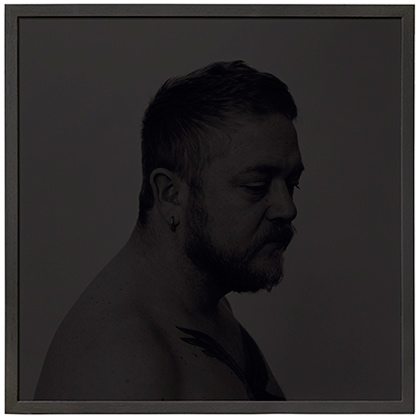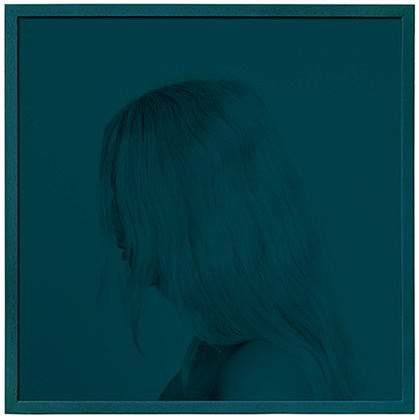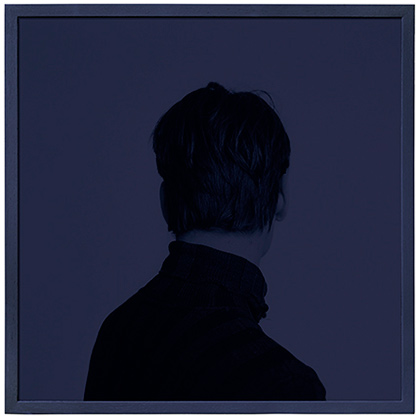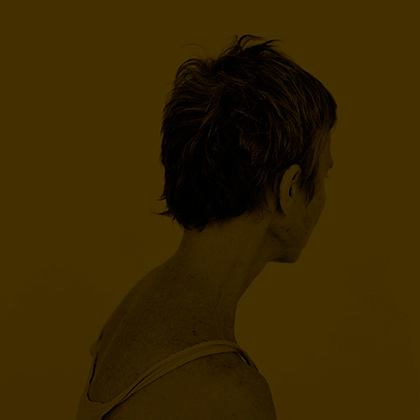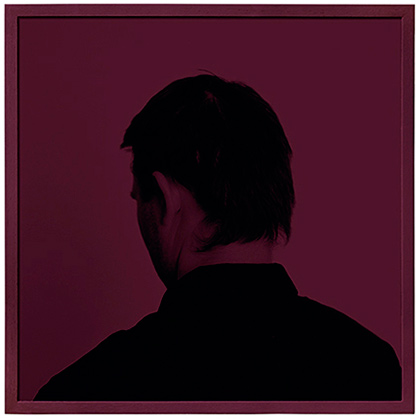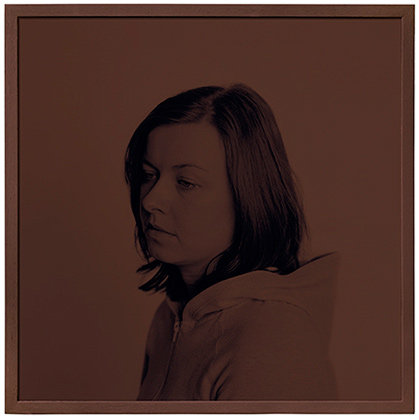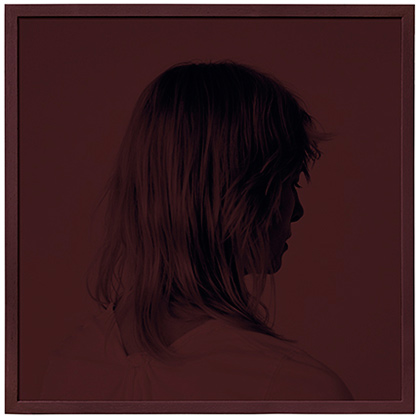PORTRAITS THAT ALMOST AREN’T THERE
You have to make an effort walking through Trine Søndergaard’s exhibition
Monochrome Portraits. Each photographhas its own muted, dark color that
flows across a wooden frame hand-painted in the same shade. You have to
find the right distance and angle to even see the person portrayed. Glanced
from a distance, or moving just slightly toone side, they disappear into the
image, leaving the viewer with a dark, monochrome surface. The portraits
constantly threaten to disappear. But they also constantly re-emerge in the
meeting with the viewer. These are portraits that are almost not there. And
they are almost not portraits. With Monochrome Portraits Trine Søndergaard
challenges and renews the conventions of the genre. The people in the
portraits are photographed sitting alone with their gaze lowered or their head
turned away so only their profile or the nape of their neck is visible. We are
witness to a private and quiet moment, with the model meditatively withdrawn
into their inner self. Unlike classical representative portraits, the images have
no apparent ambition to expose the soul and personality or status and life of
the individual. Instead, the series seeks to visualize a state of mind. Maybe it
is connected to melancholy, maybe a kind of resignation. It is difficult to label
precisely, since the state is elusive and withholds something that cannot be
communicated visually or verbally.The portraits may show a mental space the
individual has withdrawn into, but they also make it clear that we as outsiders
have no access to that space. With this enigmatic expression, Monochrome
Portraits breaks with dominant perceptions of the photographic portrait.
Text by Ph.D Mette Mortensen
Translation by Jane Rowley

